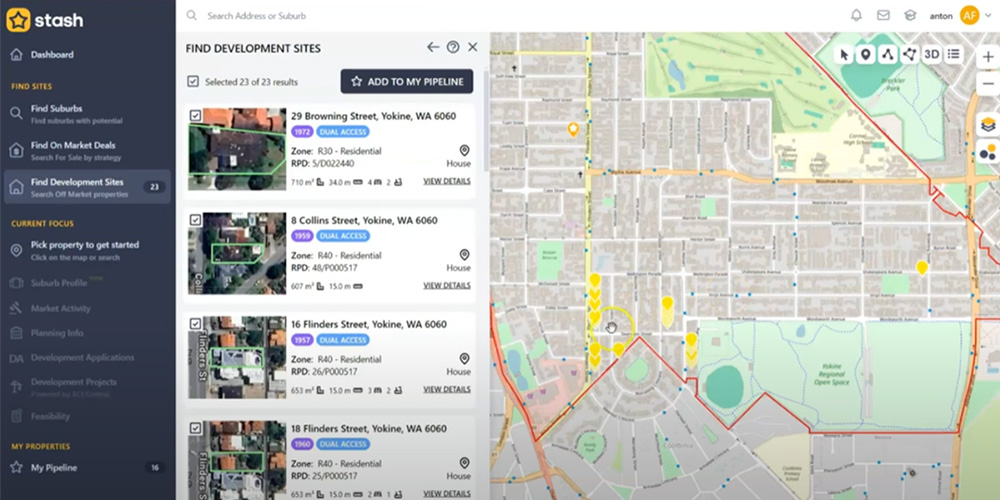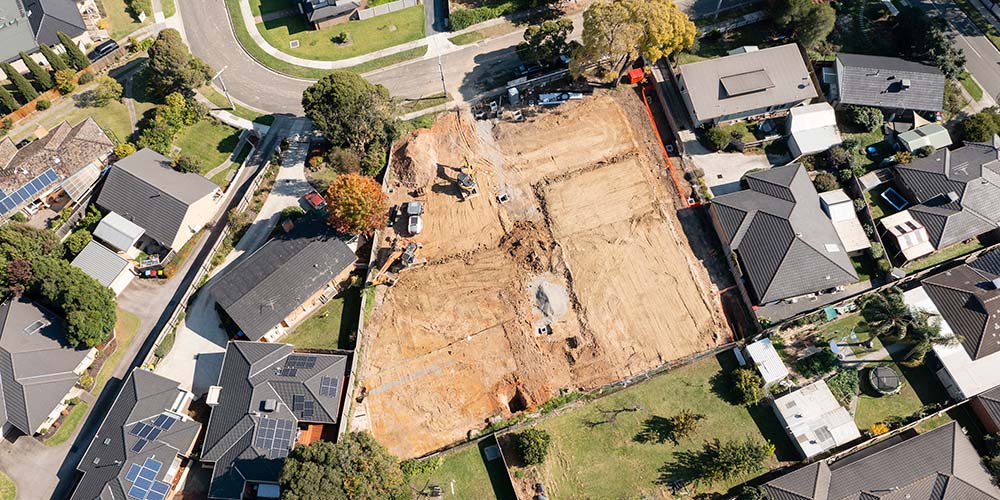
A property developers market update for the year ahead in Western Australia
The West Australian property market had been on a steady slump trajectory for the better part of a decade leading up to 2021. Early last year we saw the green shoots of a long-anticipated Perth property market recovery begin to emerge. Then the turmoil began, as global economy and society at large was rattled to its core by the outbreak of our first major pandemic in many years. It’s fair to say the shock and uncertainty triggered by the COVID-19 outbreak has taken us on a rollercoaster ride through the Perth property market leading up to 2021.
Initially, experts at major data centers and banks led the charge in predicting severe recession and contraction in property markets across the country over coming years, some calling falls as much as 25% in value or more as possible. Lending institutions closed their doors, panicked sellers withdrew their stock from the market. Fast-forward only several months later, and real time data was painting a very different picture. By November, consumer confidence and transaction levels in the Perth property market were at an all-time high. Growth is being fuelled by government housing stimulus and the legacy of many years of latent stock undersupply. Perth is also seen by many as a COVID-19 safe haven, with the best housing affordability in the nation and a booming domestic economy, meaning interstate migrants and investors alike are adding demand pressure to a market that is already well undersupplied.
Leading into 2021 the Perth Property market has hit a 40-year rental vacancy rate low, and properties are listing and selling at their fastest rate in nearly 14 years. Good stock is up and gone in 48 hours, with multiple bidders at the door. Buy value is a difficult task for homeowners, investors and developers alike. Weekly transaction levels are currently higher than the last boom in WA, and the banking institutions and property analysts who were doom and gloom sceptics not 6 months ago have now done a U-turn on their forecasts, with some claiming the Perth property market will achieve as much as 20% growth over the next two years, starting in 2021. No-one would have guessed that the knock-on effects of a global pandemic would get the market moving in the way it did. There is a big question however- is this the next boom, or a bubble?
We are in unprecedented social and economic territory, both globally and domestically. Whether the current economic climate and growth level will sustain is yet to be seen. In the remainder of this article I will share the thoughts that shape my Perth Property market predictions for 2021 with you.
COVID-19 and Broader Macro Economics.
The West Australian domestic economy is emerging from last year’s turmoil better than unscathed. It is in fact flying along. Some of the reason for this is circumstantial, a lot has to do with planning that well predates the pandemic. Covid-19 has facilitated a huge increase in global demand for our resources, mostly to fuel other countries infrastructure stimulus projects. Many large resources and infrastructure project expansions are coming online now, some having been in the pipeline for many years.
There has also been aggressive stimulus spending in the infrastructure and housing sectors at both federal and state level, both of which has benefited us as a society and been extensively taken advantage of by consumers. The WA government has also done an excellent job in controlling community transmission of the virus and cross border movement of migrants, making WA an excellent place to move about and do business in more or less freely and unrestricted, since September last year.
The net result? Western Australia is once again seen as a great (and very safe) place to work and play. It has a great lifestyle to offer, very affordable housing and a heavily undersupplied labour market with plenty of employment opportunity. In ordinary economic circumstances, this would drive up interstate migration and place pressure on the housing market (and hence prices) for many years to come. It appears to be doing the same now.
I do however watch with interest (and some caution) for the first half of this year and wonder what happens when the Government stimulus and support dries up. The government has been busy printing money and providing handouts like no tomorrow. To add to this, collective debt (individual household, business and super funds) is at a record $34.1 Billion dollars, up from $26 billion last year. We must remember that there are many individuals and enterprises (in this state particularly) that were only ever a few paychecks away from going broke prior to the pandemic. Nothing much has changed in real terms except for tax and debt relief, and handouts. It would be erroneous to think you haven’t been living in an artificial economy.
Housing stimulus packages closed at the end of last year, with Jobseeker, Jobkeeper and remaining SME relief all due to be wound up by the end of march this year. This means we will soon take the training wheels off the economy and peoples employment security at large. During the time we bought ourselves with stimulus and handouts however, we have not seen any major policy or attitude shifts, at a private, state or federal level, that define or take long term responsibility for:
- How we will protect a very fragile economic recovery situation that is still very exposed to a pandemic environment (recent outbreaks in Queensland, Victoria and NSW have shown how quickly the situation can turn around), and
- Promoting and sustaining innovative growth as Australia (and the world) grapples with the new norm of “doing business”. If anything, we have ignorantly buried our head in the sand because we have not been exposed to loss of freedom and life in contrast to other nations.
Supply and Demand.
It is no secret that in the second half of last year major stock supply shortages, for rentals, dwellings and land, became apparent in Perth. The WA property market has been sluggish for many years prior. Many major developers have been in damage control, keeping supply to a trickle due to lackluster demand and the inability to add value to property faster than it was going down in value. The sudden nonexistence of stock was therefore not an overnight occurrence.
It has been the product of years of inactivity, driven by lack of viability and local demand. Minimal new land or housing supply has been brough to market, and very little has been in planning. A sudden and circumstantial shift in buyer sentiment however, catalyzed by generous government incentives and industry stimulus has now left developers scrambling to develop sites fast enough and prospective owner occupiers struggling to put a roof over their head. Supply is being far outstripped by demand in most market segments and will likely take several years to balance out. In the interim, we can continue to expect fierce competition in both the sales and rental market for stock: it is definitely a sellers’ market and has shifted that way very quickly. Even off the plan or presales have been working well in the last 6 months, and may continue to do so for some time, with buyers eager to secure a home in a market that has no obvious end to supply woes in sight.
There is an argument to say that latent domestic consumer demand has been building up for years in WA, which is now unleashed. We now add to this the return of eastern states migrants and investors. Some are being driven across the Nullabor by the by lack of affordability on the eastern seaboard and economic opportunity in the west. The investors are lured by low interest rates, reasonable yields and wonder at the fact that property within 10km of the CBD can still be purchased for less than $ 1million dollars. There is now pressure on supply from all fronts, facilitating a perfect storm for value uplift. Sharp price rises over the next few years seem secured thanks to the supply and demand imbalance, and the inability of the housing and development sector here to bring stock online fast enough.
Thousands of developers and homebuilders have hit the go button on projects and home builds in the last 6 months. To this end, all market segments must now be watched with caution over the short to medium term, as some segments may have supply corrections quickly. A lot of new stock will be coming to market in the second half of this year. In particular, lots of first homeowners who jumped at the ability to qualify for up to 3 tiers of government grants will be vacating existing rentals or established properties, particularly in the sub $500 000 suburban owner occupier category, to move into their new homes. A lot of demand in this segment domestically has been soaked up- many who were planning to build in a few years have jumped early due to irresistible incentives.
The knock-on effects? We may see a sudden oversupply of low priced, established stock returning to the sales and rental markets in working class suburban areas. This could steady the rental market (and the raise of rents), and steady out supply and demand (and slow price uplift and the need for new supply) in this market segment, unless we have significant and sustained increases in interstate migration to maintain pressure on supply. Prospective purchasers in this market segment are also the most vulnerable to financial shock and loss of employment, particularly as government support for themselves (and their employers) is taken away after March. Developers and investors alike dabbling in this segment should proceed with caution.
Property in B+ to A grade suburbs that tick all the boxes (good amenity, high owner occupier rates and low supply) will provide the safest opportunities for sustained and high capital growth and demand for stock. Entry point for purchase of a development site may be higher, however your end target market of owner occupiers is more likely have the cash and/or serviceability to purchase your stock, even if the wheels fall off the economy in the coming months. They also pose less affordability risk in a tough credit market and will help ensure you can move your stock.
Buy value and add value – New challenges.
For infill developers in 2021, the Perth property market is a challenging environment for developers to achieve “buy value” when sourcing sites. There is little stock on market, interstate investors are paying well over asking price (often site unseen). Good (and bad) sites are disappearing overnight, with little to no opportunity for due diligence of negotiation. All we can say is do your business as usual: don’t get caught up in the frenzy and the hype. Property development is a business enterprise, not a get rich quick scheme, and poses far more risks than guarantees.
Many sellers have been presenting development sites (encouraged by buoyant market activity and selling agents advice) at or above on completion value, opportunistically cashing in on a frenzied market where due diligence and rational thinking has more or less gone out the window. In our site feasibility studies over the last few months, we are seeing asking prices that leave no margin at all for the developer, unless you want to speculate a 15-20% rise in property value by the time you put your development to market. As a hint, your lender won’t be interested in this sort of speculation when you present your deal to them and expect them to fund it.
To add to the competition, a lot of novice developers and first-time developers, doing far worse math’s than you, are entering the market now as well. They often end up presenting higher offers, buying sites above the residual price you can afford to pay and still make a profit. The novice developers may not make any money when the dust settles, you however will keep losing sites to “better” offers. The net result for you is lots of wasted time in sourcing sites and research, rushed due diligence, and frustration.
Property values are rising fast, but so are development costs.
In the dwelling construction market, there is unprecedented pressure on the labour and materials market, thanks to the huge number of build contracts signed under the state and federal grants over the last six months. As with any free market, more demand for service than there is supply means inevitable rise in prices. Price rises in build costs across the board are almost guaranteed over the next few years. It is of some speculative concern that cost of building will increase at a faster rate than the property market grows, making us carefully question the capacity of building to add real value and margin to the development process in the next few years. We have been seeing this already and factoring this into our feasibility spreadsheets.
Inflated and hard to negotiate acquisition prices are eating at back end margin. Coupled with uncertainty around future build cost data, we are not infrequently finding that subdivision only or renovate and subdivide are showing the lowest risk and only (albeit modest) return on investment scenarios when doing our feasibility studies, if we are unable to negotiate a lower residual acquisition price. You will need to watch this space carefully in coming years and make strategy decisions based on summaries of known data, not speculation (around cost or values). You will have to pick your builder carefully and have early discussions around how price escalations are managed contractually, so both parties can mitigate being out of pocket or not achieving expected margins.
The key to achieving buy value and a fair acquisition price in the coming few years is going to be sourcing and securing off market development sites. Working with vendors who are in no rush to sell (or perhaps didn’t even know they wanted to sell) will allow you to do your diligence, build a business case, negotiate a fair price, and arrive at mutually beneficial terms of sale with an owner that is more likely to be reasonable. You can also afford to be creative in acquisition strategy. For example, the seller may want a long or delayed settlement to give them time to move out (say six months to a year). You can use this time to get planning approval and presale sin place, all the while paying no interest.
New medium density codes.
The Design WA suite of improvements in planning is also continuing its rollout from the Department of Planning. The draft medium density guidelines (effecting R30-R60 coded sites) have been released for public consultation now, with the deadline for comments being the end of April 2021. This document, in its final form, will likely be gazetted in the second half of this year. Part C in particular will make significant changes to the way you assess a sites development potential and achieve compliant design outcomes for built structures in the code band R30-R60. There is a raft of bonus density concessions available, with not one but three tiers of “site category” available. Compliance with specific site particulars in one of the three categories (size, frontage, proximity to activity centers/public transport, and other requirements) may allow you to reduce the minimum and average lot sizes, increasing site yield.
There are also stringent new requirements for your dwelling designs to address, facilitating a movement towards better design outcomes. This includes performance requirements around solar passive design, functional spaces and living areas (indoor and outdoor), landscaping and gardens, and the coordination of design with the neighbouring lots and streetscape. How these effect the economics of development is yet to be seen. As a small lot infill developer, it’s important for you to keep an eye on these proposed changes as they progress to final format this year and gain an understanding of implementation ramifications. Keep an eye out for the opportunities these new codes will provide, as well as provisions that will hurt the economics of development.
Boom or Bubble?
Are we in a housing boom or bubble? Whether Perth’s runaway market is going to sustain is yet to be seen. We are living in a time of immense cultural, economic and legislative change, and we are certainly doing “business as usual” in a fiercely protected micro economic and social climate in WA. Don’t be blinded by this. There are so many fragile moving pieces (some well outside your control) it may seem daunting to keep up or make clear decisions.
This climate is not going away any time soon however, so you will have to get used to it. Make sure you are adaptive and prepared and have eyes open to consider options of project viability from many different angles. Proceed with optimism and look for opportunity, there will be plenty out there. Be smart about it though, and don’t rush- there is a good deal every other day. My 7 Key tips and takeaways for 2021:
- Observe how the broader economic climate in the first half of the year performs once training wheels are taken off, to assess threats and opportunities to your strategy.
- Watch how the broader economic impact effects the property market, particularly market segments of buyers (i.e. Unemployment).
- Assess the capacity of built form to add value very carefully.
- Choose your builder carefully- delivery capacity and cost control will be more important than base contract price.
- Invest your time and energy into sourcing off market stock.
- Keep an eye on important medium density planning legislation changes.
- Monitor market segments and supply/demand imbalances carefully- as quickly as they have become an issue and source of opportunity, they can be corrected with the volume of supply in the pipeline if population growth and migration isnt sustained.
The Perth property market prediction for 2021?
Don’t get caught up in the hype, follow due process and do business as usual – calmly, collectively and rationally. I will share with you all a great method of deal analysis from a wise colleague of mine, that has never failed him:
“If it looks like shit, and smells like shit, it probably is shit” [Rick G, 2018]
I wish you all the best for your property endeavours in 2021!
Anton Flynn




